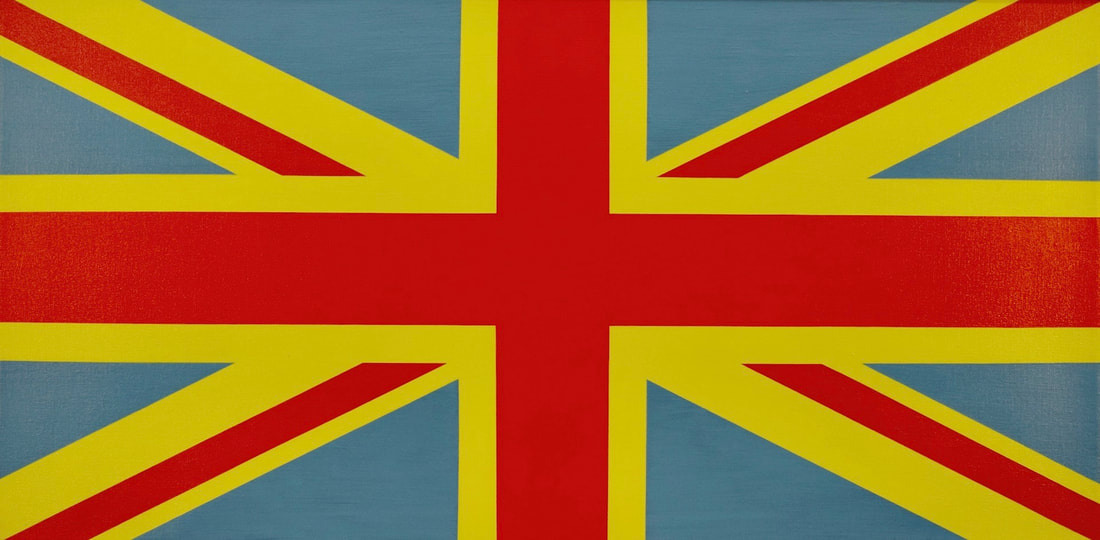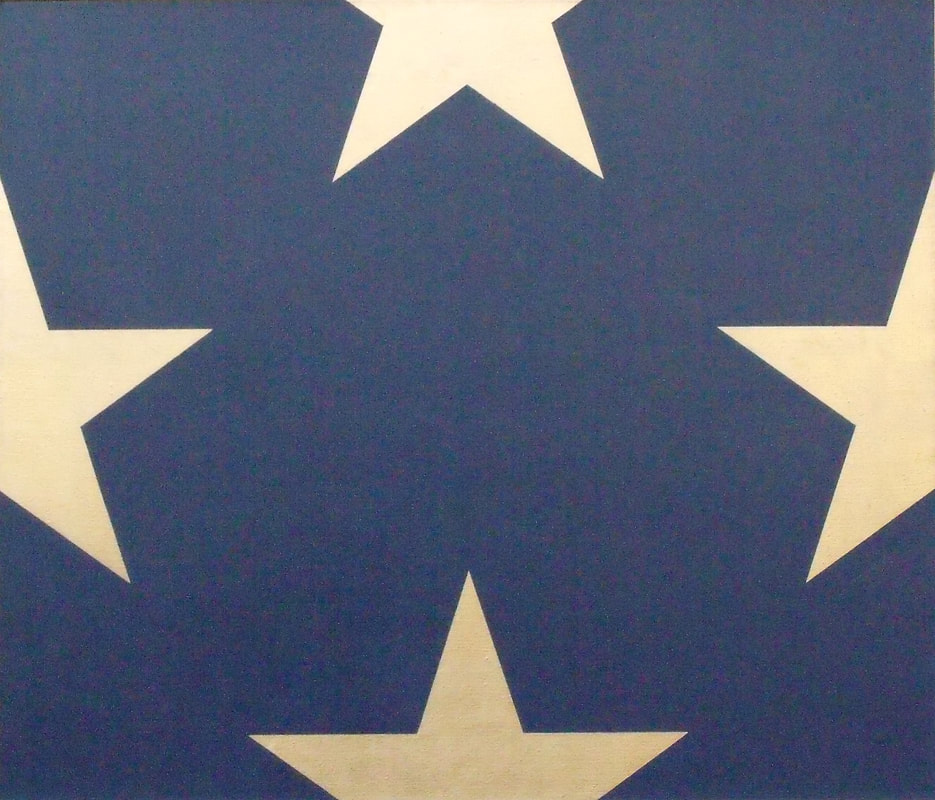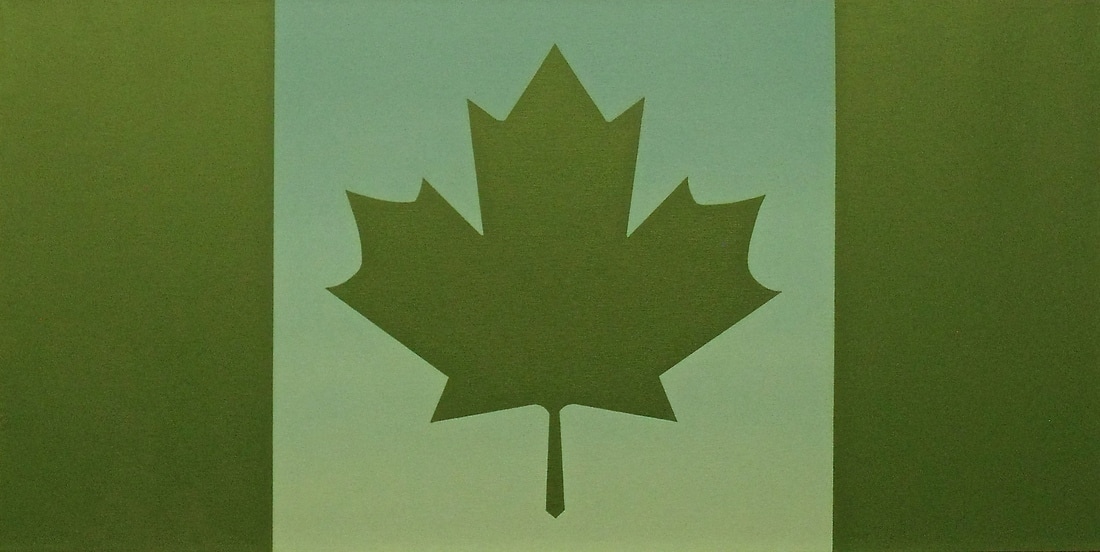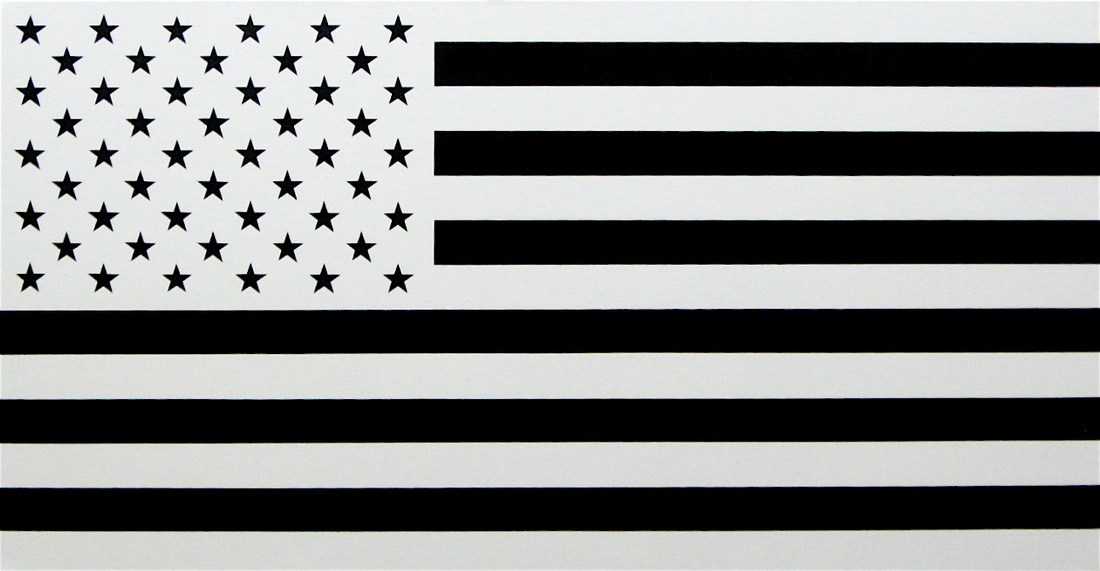Flag paintings
In 2001, after the terrorist attacks in New York City, Washington, DC, and Shanksville, Pennsylvania, American flags were everywhere. A local art association sent out a call for entries for a show whose theme would be our nation’s flag. I decided not to paint a picture of a flag in situ but just to paint a flag. So I researched the proper proportions and colors and set about to make my submission. Along the way I made a discovery: I stretched a canvas the requisite 1:1.9 ratio, looked up the colors on a PMS (industry standard) color chart, and began the project. I stretched and primed the canvas, marked off the lines of divisions, and cut an elaborate and precise stencil for the union’s stars. Because of the way I work, I underpainted the dark areas (the dark blue and red parts) with black paint, to establish a depth of tone. I left the stars and white stripes unpainted as just the white of the gesso. Once I got the black undertone in, I was shocked at the power of the simple image in black and white. I decided then that I would some day explore this more fully. I completed the painting the way I had originally planned, making a traditional representation of Old Glory. (It was beautiful because it was our flag, but as a painting not very exciting.)
It took another eight years (I had a lot on my plate) but in 2009, I began in earnest to develop this idea. Because of the flag’s universal familiarity (for Americans anyway), I thought it a perfect platform for research: keeping the sections and proportions intact but exploring how color alone can affect our emotional responses. The results are these paintings of the American flag.
Once launched on the U.S. flag project, I included the Canadian maple leaf flag and the British Union Jack in my experiments.
If interested, visit the Flag Gallery page to see more of my flag paintings, which I continue to work on.
It took another eight years (I had a lot on my plate) but in 2009, I began in earnest to develop this idea. Because of the flag’s universal familiarity (for Americans anyway), I thought it a perfect platform for research: keeping the sections and proportions intact but exploring how color alone can affect our emotional responses. The results are these paintings of the American flag.
Once launched on the U.S. flag project, I included the Canadian maple leaf flag and the British Union Jack in my experiments.
If interested, visit the Flag Gallery page to see more of my flag paintings, which I continue to work on.






















